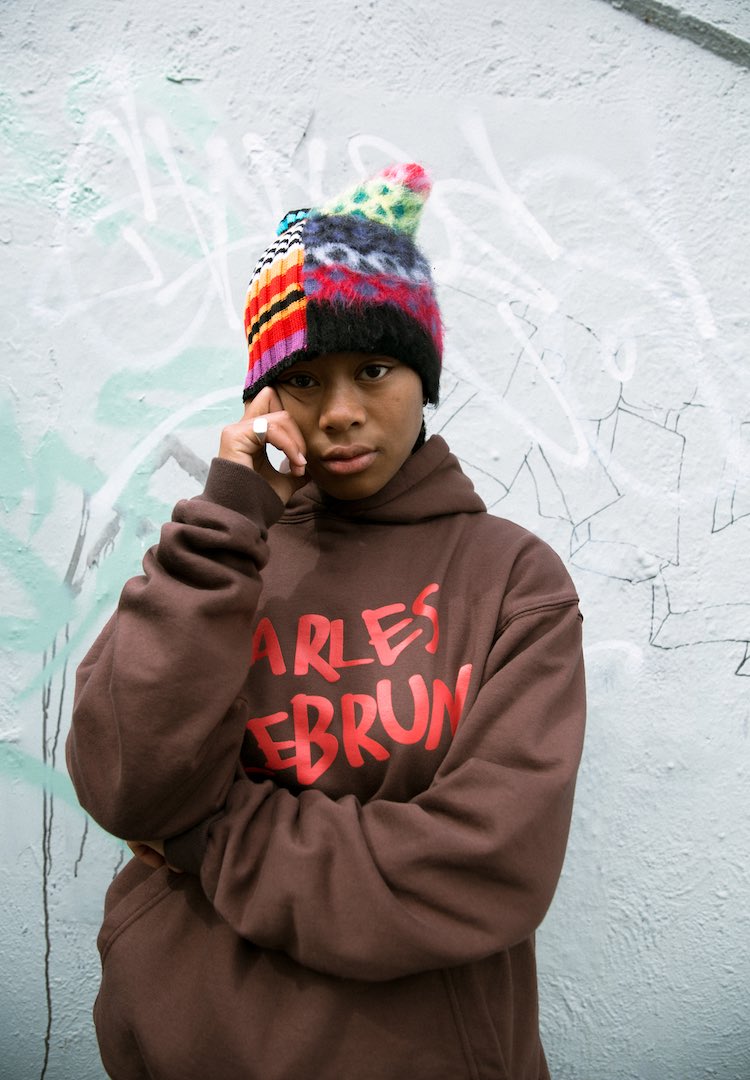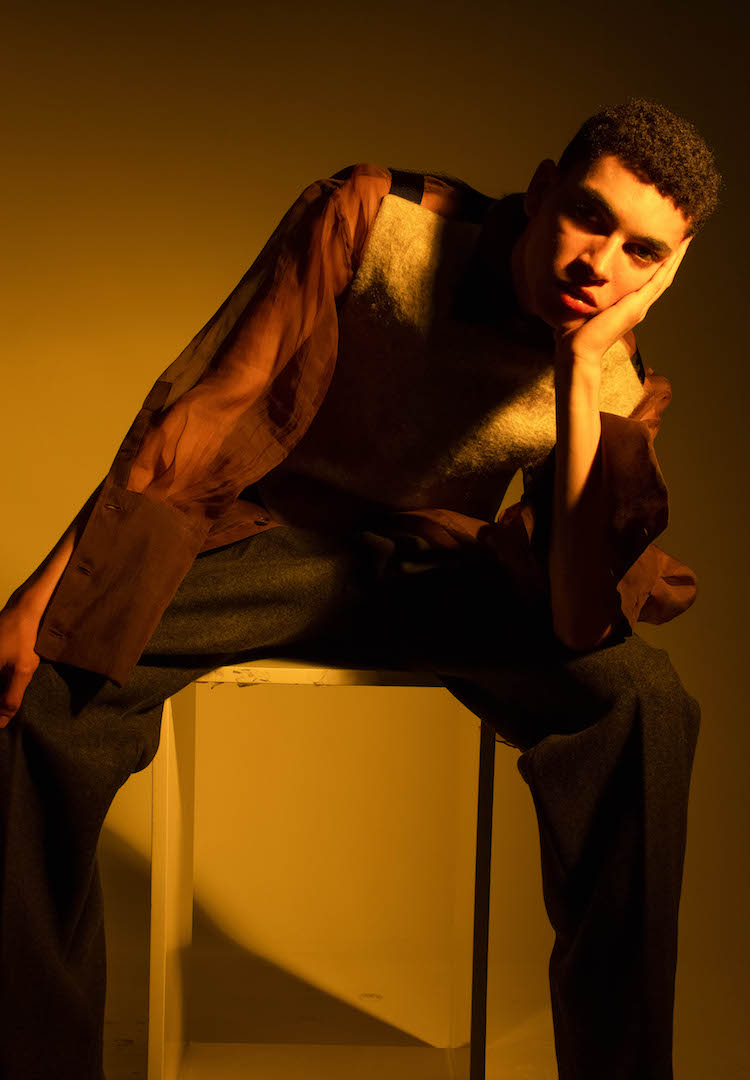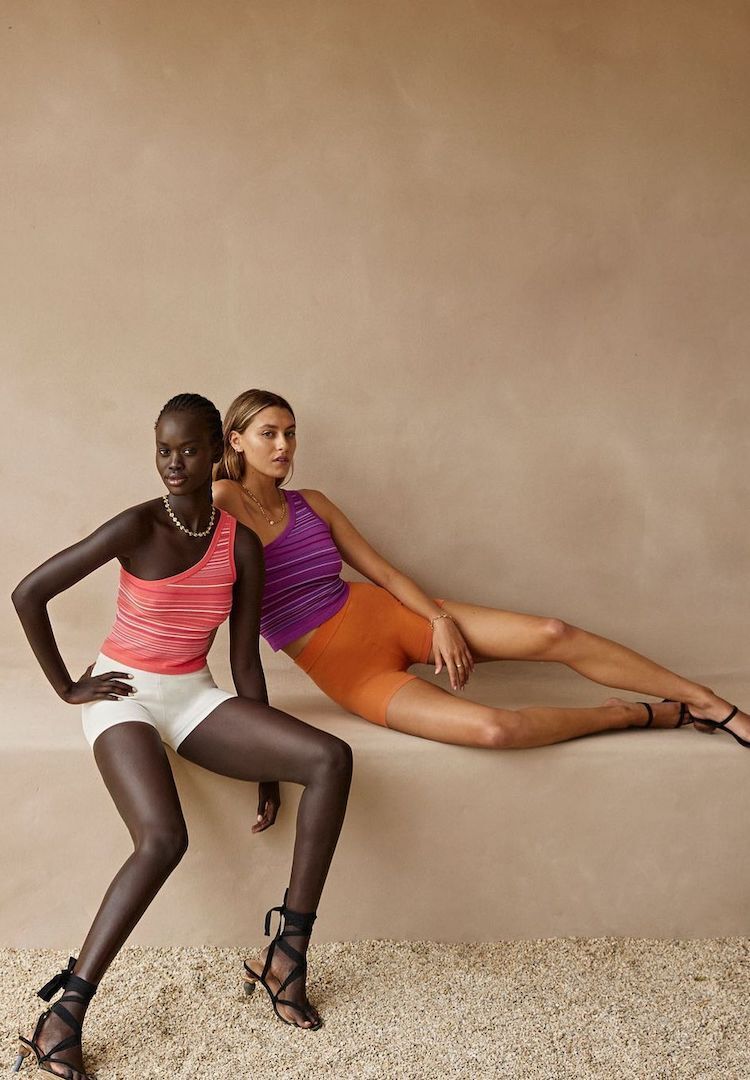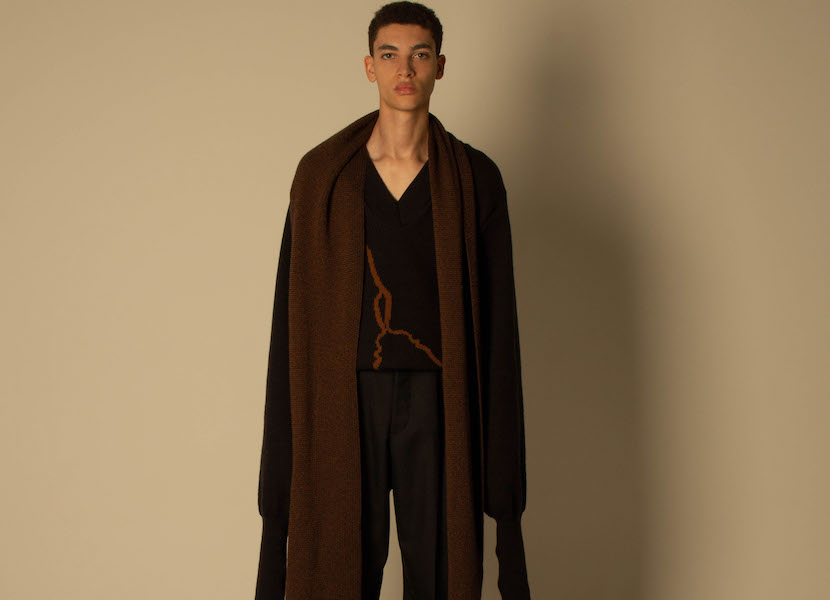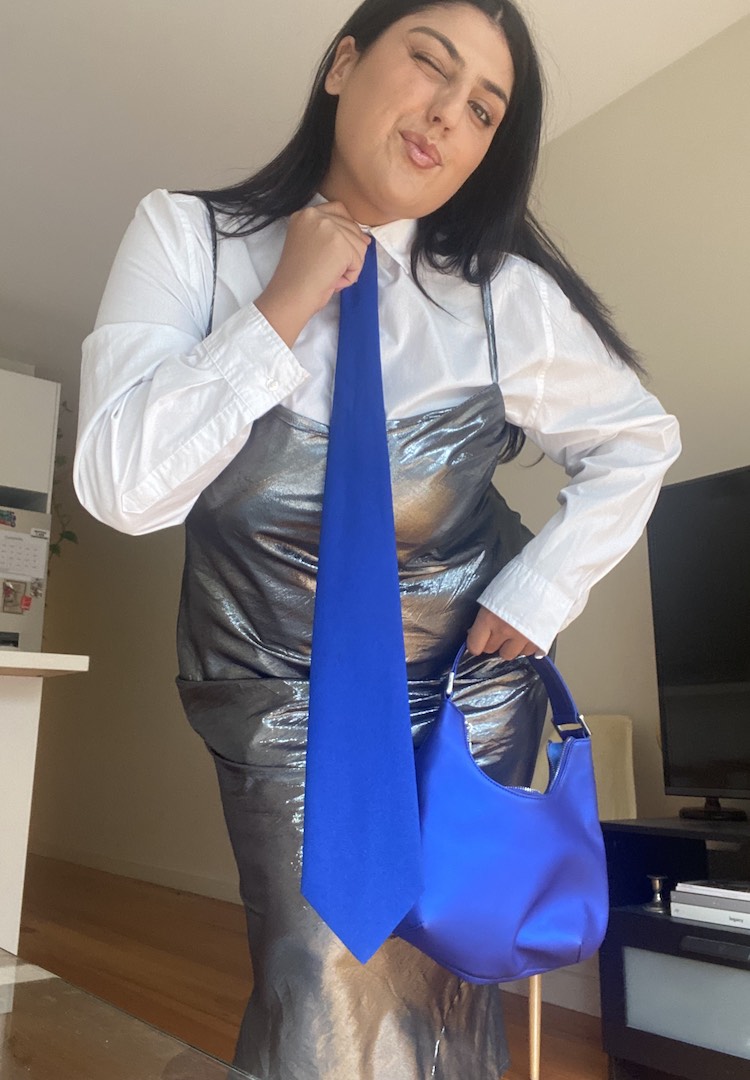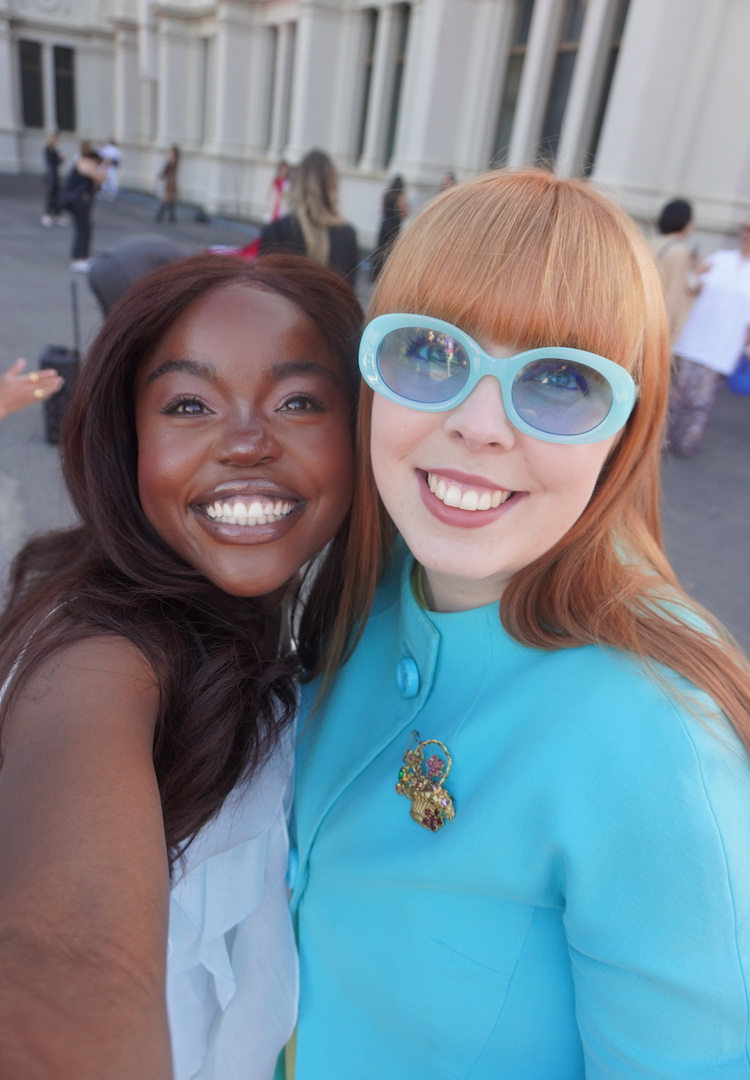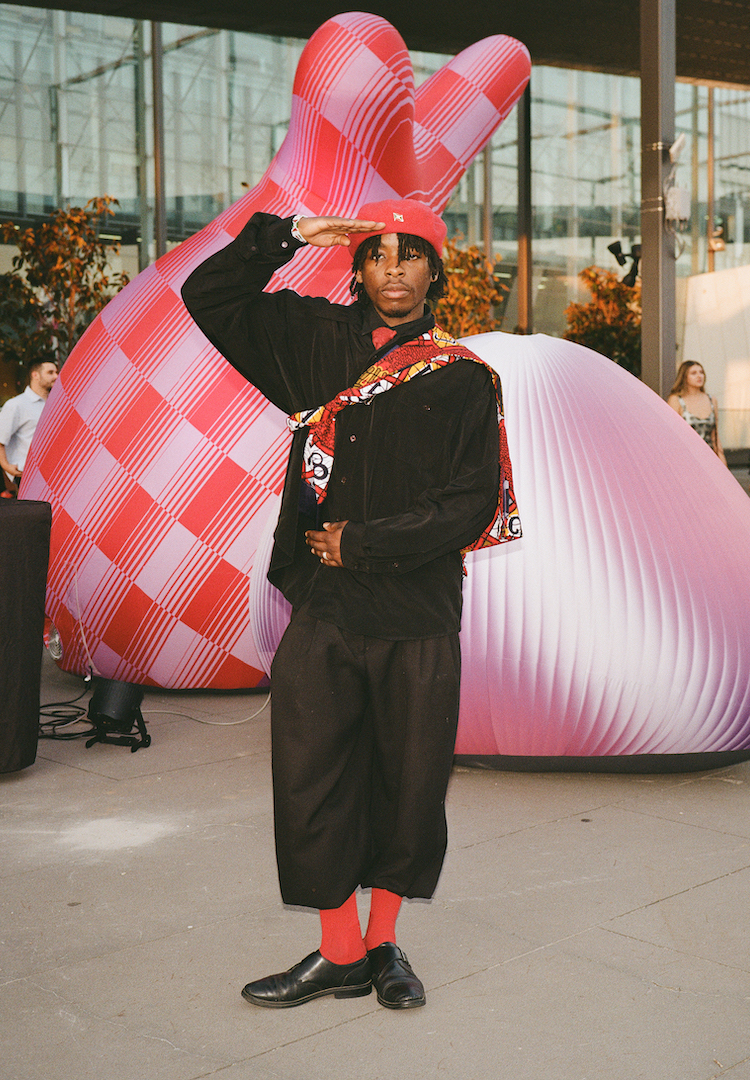Melbourne fashion graduate Hugo Stynes is creating designs that evoke nostalgia
Words by Gabrielle O’Hagan
A love letter to fashion.
Entering the creative industry was almost inevitable for Melbourne-based designer Hugo Stynes. Growing up, he was surrounded by friends and family members who took an active interest in various elements of design and construction. This exposure shaped Hugo’s own creative inclinations and fostered a deep passion for fashion, textiles and fabrication.
Hugo recently graduated from the Whitehouse Institute of Design and released the menswear collection What He Wore, which was inspired by the richness of the environment around him. What He Wore is refined, elegant and minimalistic. The warm, earthy colours, subtle variations in tone and delicate detailing convey a sense of honesty, vulnerability and nostalgia that can be likened only to a warm embrace.
For more fashion news, shoots, articles and features, head to our Fashion section.
The choice of fabric was fundamental to creating this sense of nostalgia in What He Wore. Hugo was intent on using high-quality textiles like alpaca fleece and merino wool in order to enhance the textural variation in his work. It was also important to him that he use natural fibres and reduce waste so as to maintain the integrity of his collection. His collection earned him a spot among the top 10 designers at the 2022 National Graduate Showcase at PayPal Melbourne Fashion Festival.
Fashion Journal is excited to once again be supporting the National Graduate Showcase, presented by Samsung Galaxy, to celebrate Australia’s top-ranked emerging talent in fashion. A select number of leading fashion graduates from all over the country will exhibit their visionary collections in a digital presentation, showcasing cutting-edge design and innovation.
Over the next few weeks, we’ll be profiling each designer through a series of interviews. Next up is Hugo.
Hi Hugo! Please introduce yourself to our readers.
My name is Hugo. I’m a Melbourne-based designer and recent graduate of the Whitehouse Institute of Design. I completed my Bachelor of Design and Graduate Certificate of Design in 2021. I’m usually drawn to a more minimal and pared-back style and I like to use fairly muted colour palettes. I typically focus on the silhouette and subtle detailing of my designs, but also, the feeling of a garment is absolutely fundamental, so the quality of material and fabrication is always a priority.
Tell us about your collection.
For me, What He Wore is a sort of ode to the romantic genre. I wanted to create a menswear collection that truly captured the enfolding warmth of emotion intrinsically linked to feelings of love and adoration. The title is supposed to bring to mind a sense of fond recollection.
Quality textiles were so important in bringing my collection together. I wanted the warmth and security central to the concept to actually be experienced by the wearer. I used an extensive textural and tonal variety of Australian wool to achieve this. Two of these textiles were created originally for this collection. These were a hand-felted alpaca fleece and machine-knitted merino wool.
As I’ve mentioned, a driving force behind this capsule was my desire to communicate a richness of emotion, albeit subtly. Each look makes some reference to romanticism, whether it be a warm embrace, a kiss, or vulnerability.
View this post on Instagram
What were the major points of inspiration for your collection, and you more broadly as a designer?
I draw inspiration from so many areas of my life and interests, finding that the more removed from fashion, the more excited I am to bring that influence into my work. So, with regards to my graduate collection, I first looked at the setting or the environment that I wanted my garments to be a part of. I felt that small and private interiors captured a sense of intimacy that I wanted to explore. I tried to understand what elements made these spaces feel so personal and how I could incorporate that into the collection.
I use films quite a lot too. I’ve found that they offer a deep dive into key themes that I intend to incorporate in my collection. This can be so valuable in developing my ability to communicate and represent these themes effectively in my concept and designs. So, for example, while planning to focus on themes of romance and affection in this capsule, it was really useful to research the different ways those themes were discussed and navigated.
Tell us about the experience of putting together your graduate collection.
Overall, I’d have to say that putting together my graduate collection was a fantastic experience, certainly not one without challenges, but a truly rewarding process. Thankfully, I had a very functional setup while working from home and if anything, found that being locked down allowed me to spend far more time on the design and fabrication of my capsule.
One of the challenges I did face though, being a texture-focused designer, was being limited in my ability to sample fabrics. This meant that at times, I had to make purchases without having felt the weight and quality of the textiles. While working back at home in South Gippsland, the regional postage delays also meant I had to work on whatever arrived first instead of what needed to be done the soonest.
While these challenges were frustrating, I was so lucky to have a supportive network around me that motivated me to take them head-on. Finishing the year on campus and being surrounded by all my classmates’ amazing graduate collections was such a great morale boost and allowed me to finish the degree in the collaborative and creative environment I had been craving.
View this post on Instagram
You grew up on a building site in regional Victoria. Can you tell us a little about that?
Well, my dad designed and built a house on our family farm. The building progressed slowly for roughly eight years. While I did go to school in the city, I spent almost every weekend and holiday of that period at the farm. For the first two years my mum, dad, brother and I lived in an old dairy shed. Once there was a roof, walls and windows, we moved into the house, using makeshift kitchen benches, tables and chairs on a cement slab.
The building site was almost always active in some way, but rarely more than my dad and a builder worked on it at any one time. When we could, the whole family would pitch in and growing up I learnt so much about the structure and design of every element. I remember clearly, when I was pretty young, about 10 or 11, building stud walls in the house with my brother.
I found myself endlessly entertained in planning the layout and interior design of the entire house. I was always around a developing design, literally living inside it. I couldn’t imagine a better experience and introduction into the design field and something that would ignite an interest in construction and fabrication.
How has your upbringing influenced your design practice?
I was just always surrounded by creative activities. Not just at the farm, on the building site, but my whole family is interested in visual art or design in some way. So while I wasn’t always sure what field I wanted to pursue, I was always encouraged and supported by my parents. I suppose that after a while when I inevitably developed a real interest in design, I was in the perfect environment to pursue it.
In terms of how my upbringing has shaped the way I design, I would say that I learnt very quickly that complaining or giving up wasn’t really going to get me anywhere and more or less in my design practice, when faced with obstacles, I just have to put my head down and ‘bore on’.
What part does sustainability play in your design practice? And other ethical considerations?
Sustainability in fashion is fundamental and there’s no doubt that the fashion industry is one of the largest polluters in the world. Thankfully, it seems to me that most new designers are making a genuine effort to minimise their environmental impact. In my case, I attempt to use almost exclusively natural fibres and reduce any material wastage by saving scraps and offcuts to be used on future designs.
Also, so much of the pollution caused by the industry comes from the disposable nature of our clothes, so in an effort to avoid that I prioritise high-quality fabrication and materials so that garments that I design are made to last and hopefully exist as staple wardrobe pieces for a long time. In saying all this, I’m a small fish in a big pond, so I believe the biggest contribution I can make in the interest of sustainable fashion is yet to come.
What’s next for you?
I’d love to finish the rest of my master’s degree at some point in the near future, but in the meantime, I’m focused on getting into the industry, working, and learning as much as I can.
Explore more of Hugo’s work here.

